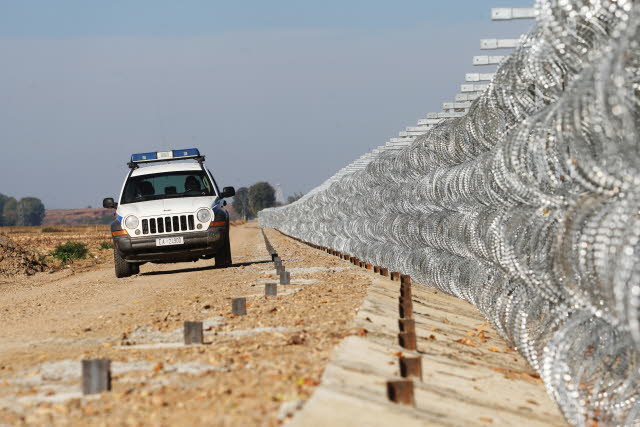The European Parliament (EP) receives numerous requests for intervention in application procedures for asylum, or assistance in case of difficulties related to refugee status.

In the EU, asylum may be granted to people fleeing persecution or serious harm in their own country. To guarantee high standards of protection for refugees, to ensure that the procedures are fair and effective throughout the EU and to prevent their abuse, the EU States have committed to establishing a Common European Asylum System – a set of EU directives and regulations – to which the EP gave its green light in June 2013.
Applications for international protection lodged in the EU have to be examined by one of the Member States –- the criteria and mechanisms for determining the Member State responsible for handling an application by a third-country national or a stateless person are established in the Dublin III Regulation (read more on this regulation).
Common procedures for granting and withdrawing international protection are established in the Asylum Procedures Directive (2013). The Qualification Directive establishes common grounds to grant international protection, the Reception Conditions Directive establishes common standards for the living conditions of asylum applicants and the EURODAC Regulation establishes an EU asylum fingerprint database.
The European Asylum Support Office
The EU set up a European Asylum Support Office (EASO), an agency of the EU that plays a key role in the concrete development of the Common European Asylum System. EASO was established in 2010 with the aim of enhancing practical cooperation on asylum matters and helping Member States fulfil their European and international obligations to give protection to people in need. EASO provides, for example, operational support to Member States with specific needs and to Member States subject to particular pressure on their asylum and reception systems, including the coordination of Asylum Support Teams (ASTs) composed of national asylum experts.
Increase of asylum applicants in the EU
In over a year, the number of asylum applicants registered in the European Union (EU) has increased by 191 000 (+44%) to reach a peak of 626 000 in 2014, reported Eurostat in a press release of 20 March 2015. In particular, the number of Syrians rose by 72 000, from 50 000 in 2013 to almost 123 000 in 2014.
Intra-EU relocation of asylum-seekers
Some Member States face very large numbers of asylum application in absolute figures, and others in proportion to their population. The European Parliament has therefore called for a system based on burden-sharing between Member States, providing fair distribution of asylum-seekers among Member States.
Currently, there is an ad hoc intra-EU relocation programme in place for Malta (Eurema II project), with Member States committing on a voluntary basis to take asylum-seekers. EU funding offers assistance to those Member States who are willing to implement resettlement programmes. Since 2005, some 700 persons have been resettled from Malta to other Member States, either within the Eurema projects or based on bilateral relocation agreements.
Calls from the EP, e.g. in the resolution of 11 September 2012 on enhanced intra-EU solidarity in the field of asylum, to establish a permanent relocation mechanism, met opposition from several Member States which fear that relocation might become a pull factor for migrants. Parliament reiterated again in a resolution of 17 December 2014 the need for the EU to ‘step up fair sharing of responsibility and solidarity towards Member States which receive the highest numbers of asylum-seekers in either absolute or proportional terms’.
Other parliamentary activities
Members of the European Parliament (MEP) regularly make use of parliamentary questions, for example to ask for additional information and for clear answers from the European Commission (EC) on what is being done on the European Union level to help people, to alleviate difficult situations, or to ensure that EU rules in place are respected and enforced.
Members of the European Parliament (MEPs) discuss such difficult situations during plenary sessions and often call on Member States to join the efforts of the international community by imposing sanctions on countries, organisations or individuals who contribute to the spreading of violence and conflict; they also call upon the EU and its Member States to offer humanitarian assistance, either to non-EU countries or to those Member States who are the first to be hit by waves of refugee flows.
Measures to address potential abuses
In September 2013, Parliament backed a new visa waiver suspension mechanism (included in Regulation (EU) No 1289/2013) to ensure that visa free travel does not lead to irregularities or abuse. The ‘suspension mechanism’ allows the EU to reimpose visa requirements temporarily in emergencies. Visa waivers could be temporarily suspended ‘in emergency situation(s), as a last resort’, in which a ‘substantial and sudden increase, over a six-month period’, in numbers of irregular migrants, unfounded asylum requests or rejected readmission applications had been detected, a Parliament’s press release of 12 September 2013 states.
The European Commission informed in its fifth post visa liberalisation report on the Western Balkans that more measures are necessary to maintain the integrity of the visa-free scheme and to address potential abuses of the EU asylum system.
The Commission states in its report that asylum abuse by citizens of the visa-free countries in the Western Balkans remains a considerable concern and recommended resolute actions that each visa-free Western Balkan country should take to address the push factors of irregular migration to the EU.
Additional information
Detailed information on the state of play regarding the EU legal framework on asylum and irregular immigration ‘on arrival’ is available in a briefing, published in March 2015 by the European Parliamentary Research Service (EPRS). Another EPRS briefing summarises the main ‘facts and figures‘ (March 2015).








Be the first to write a comment.